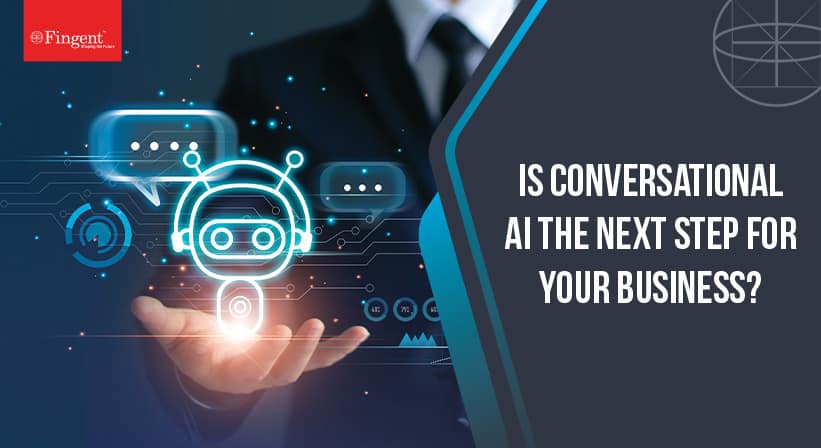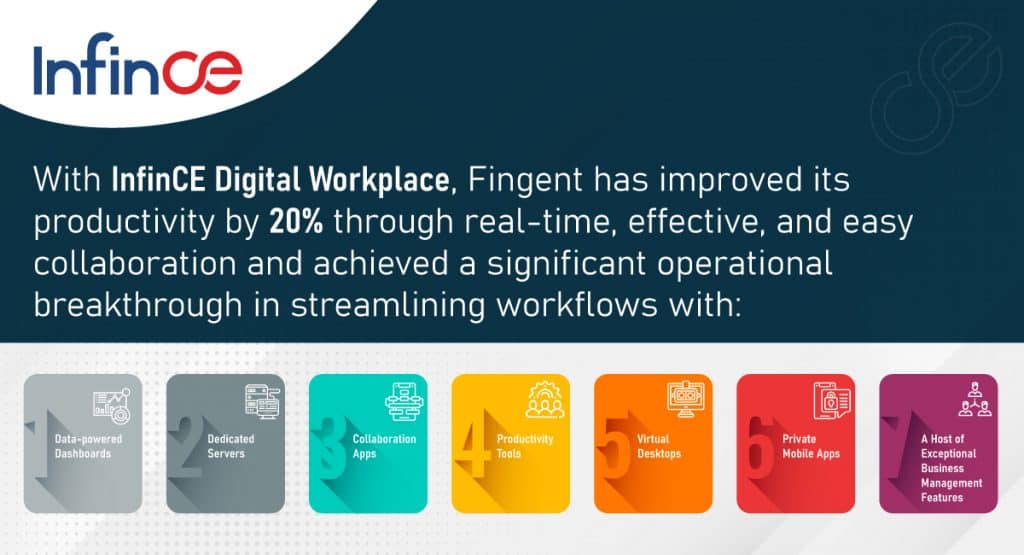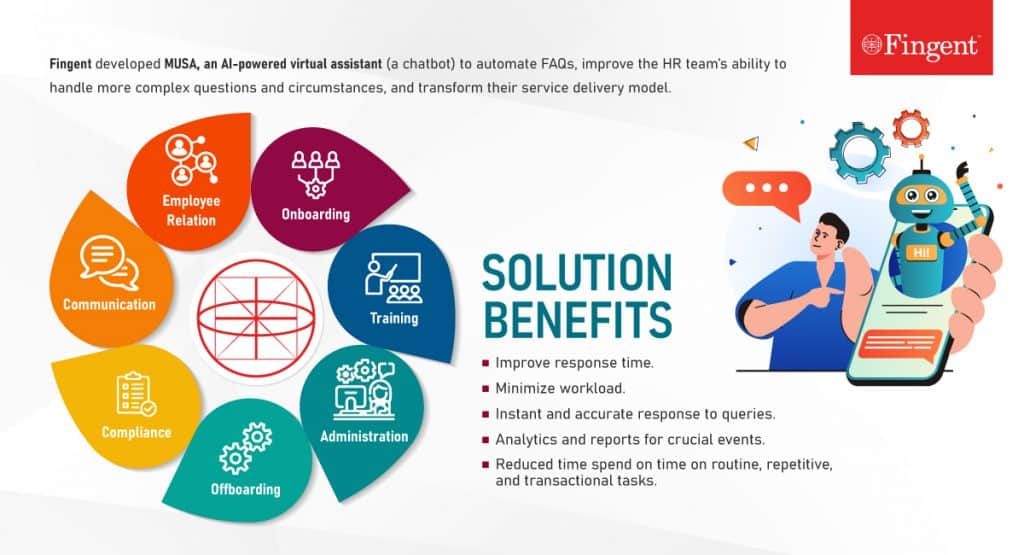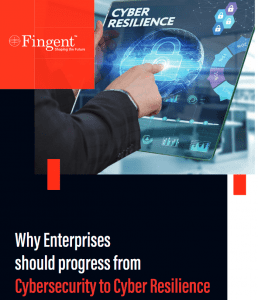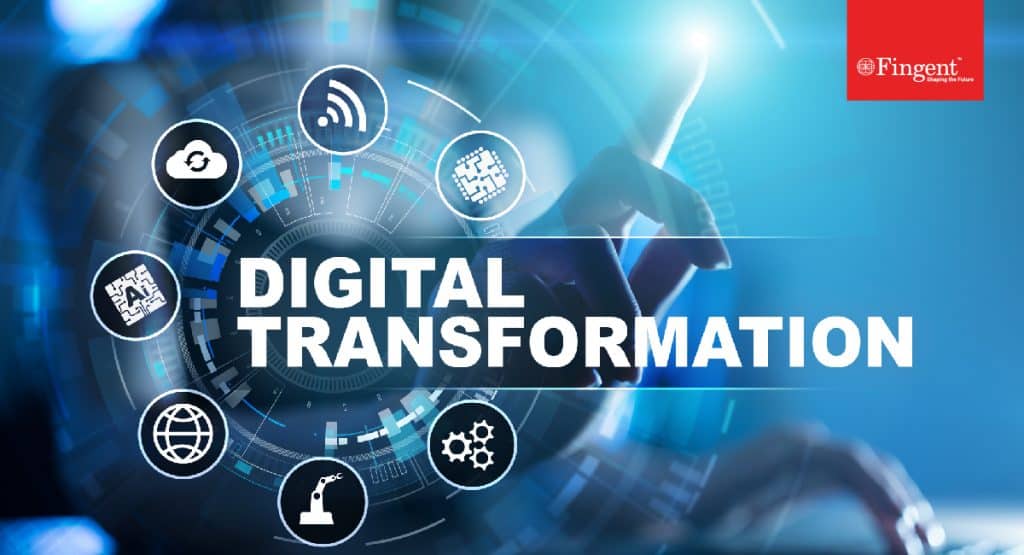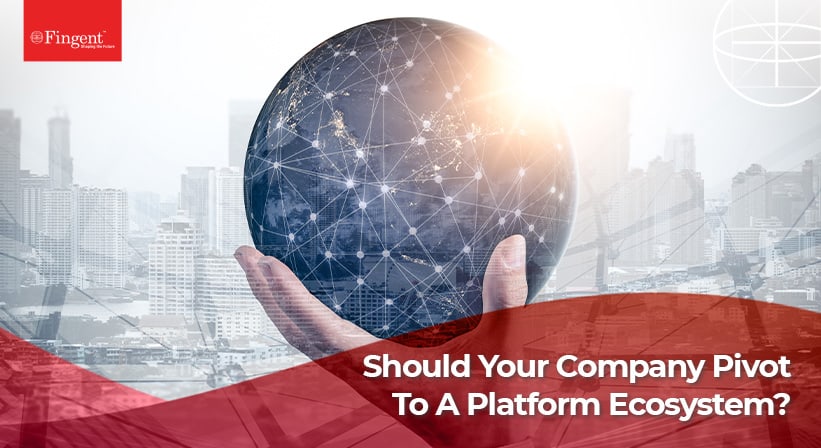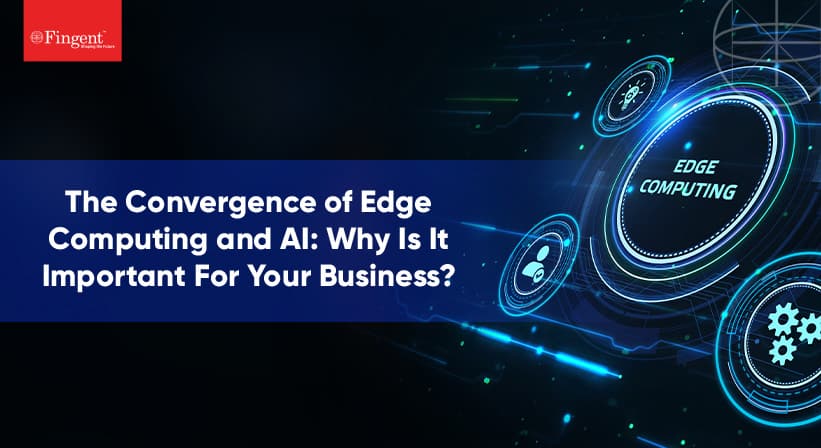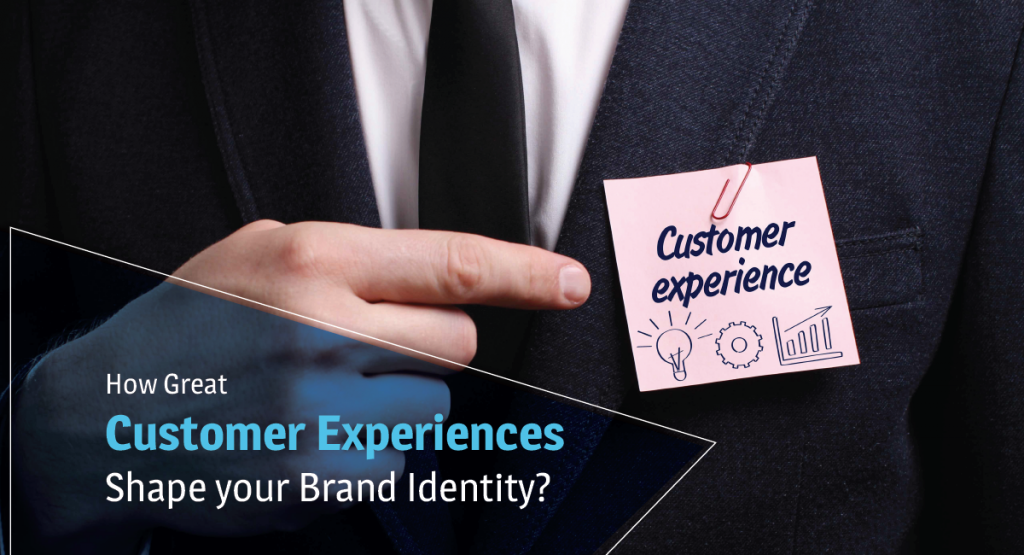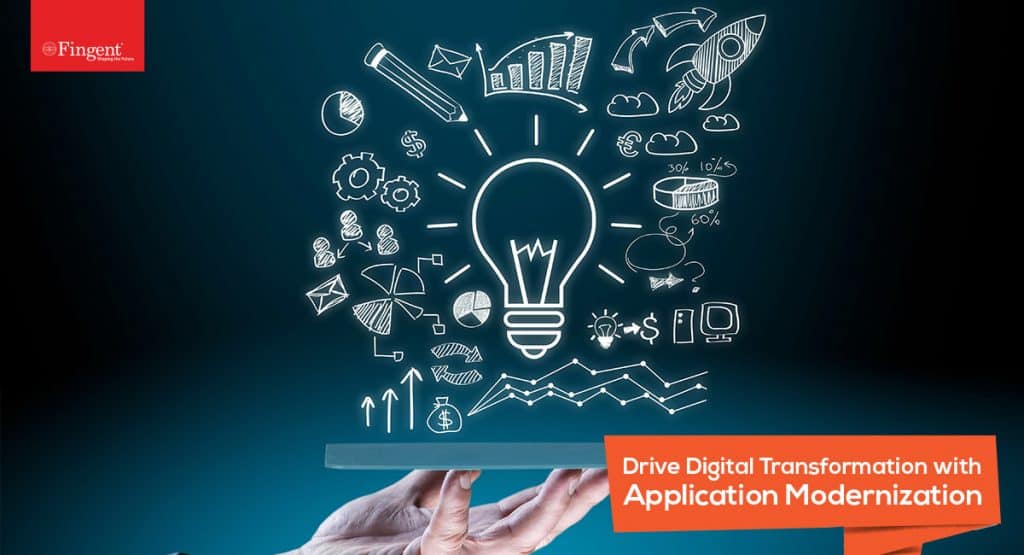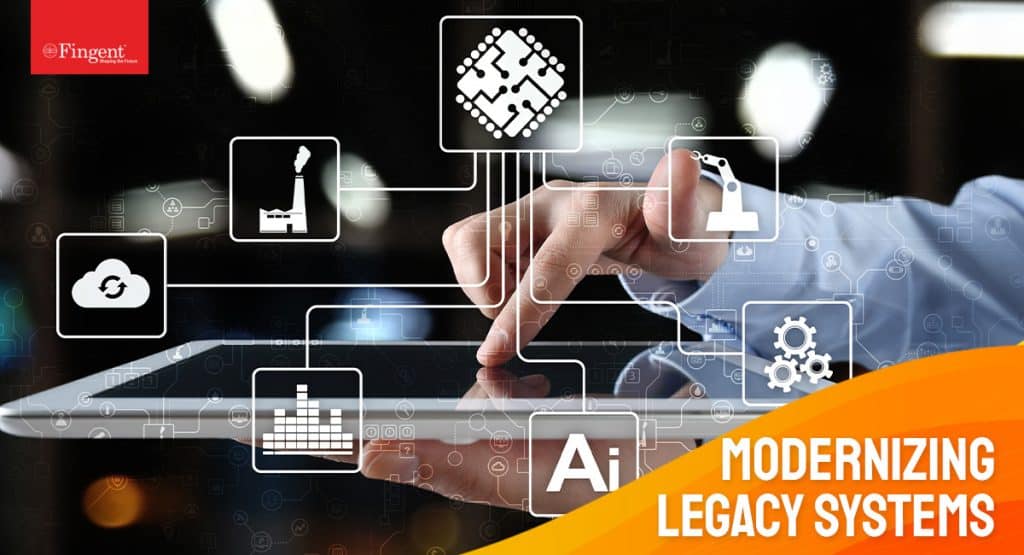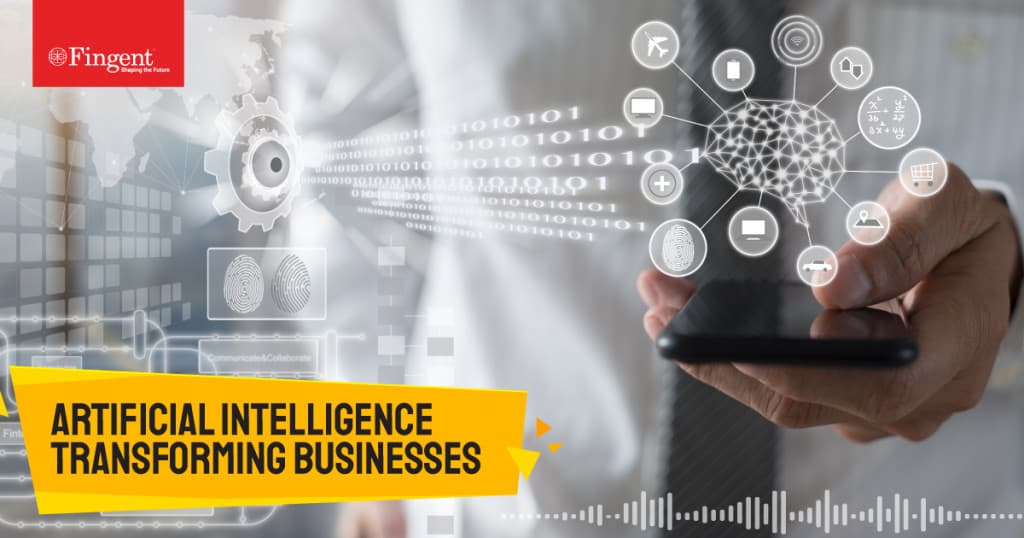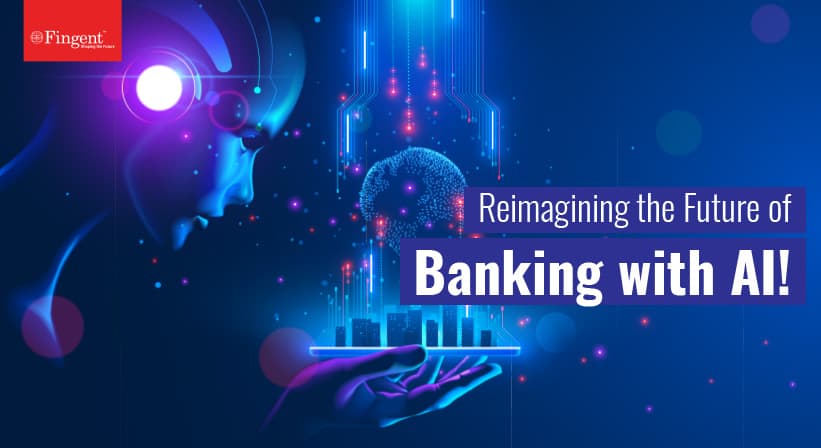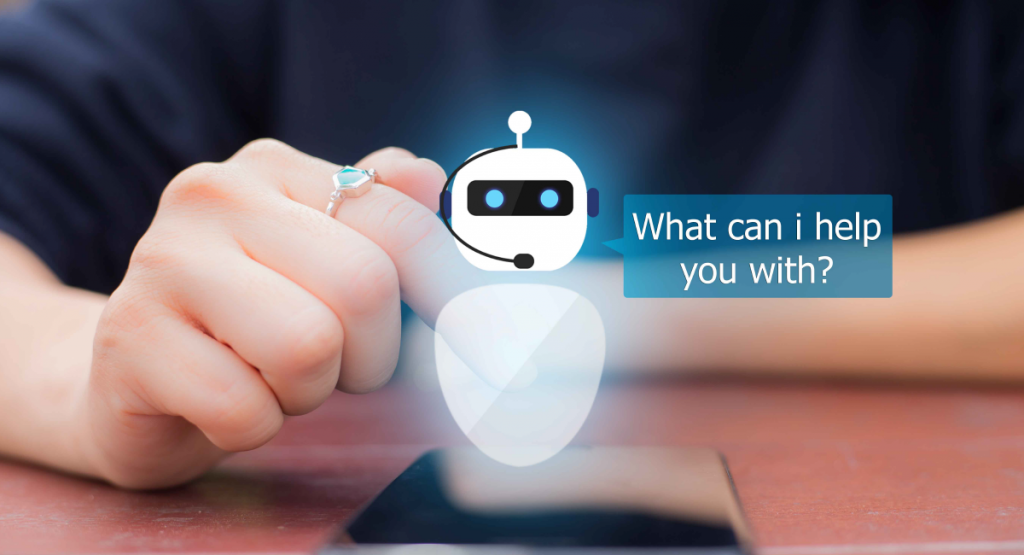Tag: Artificial Intelligence
From the mundane to breathtaking, AI is disrupting virtually every business process in all sectors. People are ceasing to associate Artificial Intelligence with science-fiction dystopias as Artificial Intelligence (AI) is taking more commonplace in our daily lives. While such acceptance in mainstream society is a new phenomenon, it is not a new concept in business. Today, AI has become imperative to maintain a competitive edge.
This guide will help business owners who are serious about maintaining a competitive edge in their business sector by adopting AI.
Rising Need for Adopting AI in Business
Did you know that 52% of companies accelerated their AI adoption plans after the pandemic? Why?
Artificial Intelligence in business is seen as a supporting tool. It is adept at processing and analyzing a trove of data much faster and more efficiently than a human brain can. Since AI can synthesize courses of action and present them to the human user, businesses can use AI to help investigate the probable consequences of each action. That way, businesses can streamline the decision-making process. This is what makes AI valuable throughout many industries.
Artificial Intelligence is a form of software that can make decisions independently. It can act even in situations not foreseen by programmers. AI has a wider latitude of decision-making capabilities than traditional software – whether it is simply helping visitors or performing a task as complex as monitoring a wind turbine to predict its maintenance.
Read more: Conversational AI: Reimagining Customer Experiences
How To Identify if Your Business Needs AI?
AI software and tools can make business processes much simpler and more effective. Besides, implementing AI in business ensures cybersecurity defense, powers customer service, and more. But how do you know when you must adopt AI in business? Here are a few scenarios:
Scenario 1: Do you need to enhance your customer experience?
Are you struggling to provide your consumers with quick, easy, and personalized solutions? AI-powered digital assistants can help your business resolve customer queries by imitating human conversation. Chatbots are among the most promising ai trends in customer engagement and customer experience. Perhaps most business owners realize how imperative this AI technology is to their business. Perhaps that is why the chatbot market is set to reach 1.25 billion USD by 2025.
Scenario 2: You know the value of sentimental analysis but do not know how to leverage it.
Businesses use sentimental analysis to monitor and analyze customers’ opinions and emotions from various texts on a website, social media, and product or service comments. Skimming through large amounts of data to churn out customers’ sentiments can be daunting. All thanks to AI-assisted sentiment analysis, you can now quickly understand how your customers feel about your services or products.
Don’t Stay Behind! Unlock Business Growth, Efficiency & Innovation With AI.
Scenario 3: Your business has suffered due to inaccurate forecasting.
Accurate sales forecasting helps businesses predict future sales for long-term business growth. It can also enable the detection of potential problems to avoid them. Implementing AI-based CRM software can help detect how each data element relates to sales performance.
Scenario 4: You have a great online presence but an awful in-store experience.
If that describes your business, it is time to adopt AI to provide the next level of a personalized in-store experience. AI can enable instant access to products or services and contribute to smarter buying decisions.
A Quick Guide to Implementing AI For Your Business
AI applications can be used in many ways depending on organizational needs and the business intelligence (BI) insights derived from the data collected. Here are some tips to explain the steps businesses can take to ensure their implementation is a success:
1. Know your options.
Find out your options and what AI can and cannot do. This will help you decide if you want to add specific AI technology or change the entire app.
2. What is your business goal?
Working on an ‘end-first’ process will help refine the list to select specific features or capabilities that best suit your business goals.
3. Find out how AI can benefit the end-users
This is crucial as it gives you the two main objectives for a successful implementation. Then, choose the software and hardware you need to make this process a reality.
Read more: AI Implementation For Businesses
4. Evaluate your internal capabilities
You need to consider if you have enough skilled employees in-house who can manage the process and if you have the budget to outsource it.
5. Choose between building or integrating the system
Remember building an AI system from scratch can take several months. On the other hand, if you choose to use a premade system, your AI partner will help install the software app, train your staff, and fulfill your business needs.
6. Test system
Testing the system for a predetermined time will help you understand if the clients are more satisfied, and if the employees work more efficiently.
7. Choose the right partner
A good AI partner will be clear about the offer, value, and terms of cooperation.
8. Make refinements
After you gather a reasonable amount of data evidencing the success of an AI solution, you can start making refinement changes to the solution.
Watch more: How Artificial Intelligence Can Enhance Your Customer Experience!
Avoid 4 Common Mistakes While Implementing AI
A well-considered plan can lead to success, but a mistake can cost you considerably in terms of time and resources. Here are four common mistakes to watch out for when implementing AI:
- Not applying AI to the right use cases: If AI is incongruous with your business goals, your time and resources will be wasted
- Not diligent in hiring the right talent: Hiring the right AI team is like putting together the right football team that can win. Hire candidates with specialized skill sets and experience that match your business needs.
- Ignoring data: Ensure all teams are responsible for organizing, vetting, and maintaining data.
- Inadequate intervention: Inadequate intervention could result in AI recommendations that hinder business objectives. Hence, ensure interventions are scalable and repeatable.
How Fingent Can Help You With Personalized AI Software Development
Artificial Intelligence is for every future-oriented business. How exactly you will use AI depends on your business goal and how well it was implemented. At Fingent top custom software development company, the AI developers are equipped to design intelligent solutions to help solve your business problems, automate tasks, and improve customer experience.
Our suite of AI solutions includes data capture and processing. Our AI developers are also proficient in analytics, multi-platform integration, and ML solutions.
Let us help you reach your business goal with intelligent AI-driven solutions. Give us a call today.
Stay up to date on what's new

Featured Blogs
Stay up to date on
what's new



Talk To Our Experts
Customer Experience – Two words that could make or break your business.
Today, customers expect businesses to provide nothing short of an excellent customer experience whenever and however they shop. This is going to be the main differentiator between you and your competitors. The race to own customer experience is on!
Some businesses are learning this the hard way, but you don’t have to. The solution is right here – Technology. Through this article, we want to help you understand how technology can improve customer experience. We will also discuss top technology trends to help your brand beat the competition.
But first, let us explain why customer experience matters.
Does Customer Experience Matter?
Did you know that 66% of customers expect companies to understand their needs and expectations?
Gone are the days when an unhappy customer used to complain directly to the brand. Today, they choose to complain to the rest of the world through social channels such as Twitter, Facebook, Instagram, and more. Creating a powerful and memorable customer experience is more complicated than ever in such a scenario.
While that is true, it is also true that these customers share positive customer experiences on these platforms as well. 71% of customers recommend a product or service just because they received a “great” customer experience.
As a brand, you may define your brand’s promises. However, the customer decides whether or not your brand delivers on its promises. According to market research by Gartner, customer experience drives over 60% of brand loyalty.
To satisfy customers, most businesses hire and train good people. But that is not sufficient. They need tools that will help them deliver a top-notch customer experience and make them want to come back to you. Using technology for customer experience can build your brand through satisfied customers.
That takes us to the next intriguing question: How does technology improve customer experience?
How Does Technology Improve Customer Experience?
Technology for customer experience gives customers unlimited access to information, allowing them to demand products and services whenever they want. As the speed of technology to enhance customer experience accelerates, businesses must evolve quickly. Brands that use technology to enhance customer experience will thrive, but you can be sure that those that are slow to react will not survive.
Here are three key ways in which technology enhances customer experience:
1. Increased opportunities
Using smartphones, customers can research products, raise queries, and purchase products or services no matter where they are and what they are doing. A study revealed that consumers in the UK spend over 22.8 billion pounds per year on online shopping while using public transport.
With consumers becoming hyper-connected, businesses need to leverage increasing opportunities to engage new and existing customers. Technology can help companies integrate all marketing channels to deliver a cohesive customer experience irrespective of their channel. Technology can help you use customer data effectively to deliver seamless experiences.
2. Reach every audience segment
According to a Google report, 90% of online shoppers use more than one device to shop. A shopper may use one device to search for a product and another to check the pricing and complete the purchase.
Businesses need to be available with the right messaging at the right time. Technology for customer experience will help you reach your customers on any device. Technology can enable you to provide contextually relevant experiences that engage customers in the right place, at the right time, and with the right message.
3. Communicate better
Most customers switch brands because the purchasing process is too difficult. Technology offers solutions to reach customer demands. AI-powered chatbots enable your brand to communicate better with your customers.
Since chatbots provide detailed records of conversations with customers, you can use that data to analyze to reveal insights on consumer pain points. You can use these insights to improve products and services.
Top Technology Trends That Improve Customer Experience
1. AI chatbot
AI chatbot is restructuring the way brands communicate with their customers. These conversational AI chatbots are responsible for creating a personalized customer experience, making sentiment analyses, and more. Consider a use case:
Fingent helped one of the oldest state universities to develop an AI-driven ecosystem that allows students to interact with an AI chatbot (teaching assistant). These are built to be trained and allow instructors to upload the content that students need. These chatbots can manage student queries and allow for keyword and tag searches of teaching material.
2. Virtual reality
Virtual reality is a game-changer enabling customers to educate themselves about your company. Plus, VR redefines how your sales reps understand customers, increasing their empathy and enabling them to suggest better solutions to their issues.
Fingent recently built a highly interactive visual medium to enable medical students to quickly gain efficiency in stand medical procedures.
3. Augmented reality and 3D configuration
Augmented reality is considered a boon to improving the digital customer experience. It gives customers a clear picture of your product, helping in quicker purchasing decisions.
Fingent helps build interactive mobile apps that enable 3D purchase decisions. It also develops agnostic web solutions for eCommerce to better use AR capabilities.
Fingent- A Perfect Partner to Create Custom Technology Solutions To Enhance Customer Experience.
The impact of technology is a powerful catalyst for change, and the speed of that change is getting faster and faster. Fingent can help you identify technology trends and capitalize before it is too late.
You must acknowledge and meet consumer demands for your business to increase market share and stay relevant. Marrying customer service and technology can drive customer delight.
Fingent brings you deep expertise in experience strategy and design, harnessing best-in-class solutions. We can help you drive transformation across the customer lifecycle, sales, marketing, and more.
Fingent top custom software development company is equipped to provide support across channels. Our quick and easy setup allows you to cut time and lower costs. With the help of AI and automation, we can route your tickets to the right agent and boost customer satisfaction. Find out more about us and chat with our experts to see how this can be done.
Stay up to date on what's new

Featured Blogs
Stay up to date on
what's new



Talk To Our Experts
The strategic significance of advanced technologies as a critical business component is recognized by enterprises like never before. Besides business modernization and cost reduction, advanced technologies allow you to compensate for labor shortages, improve brand value and competency, and expedite research and innovation processes. However, several companies jump onto the bandwagon without properly understanding the practical applications and benefits of advanced technology in their business. Only 23% of small and medium-sized enterprises (SMEs) worldwide can invest in and grow with new digital tools, indicates the World Economic Forum. This data proves why companies should analyze advanced business technology examples before adopting digital tools.
Read more: Using technology to build customer trust: Your business plan for 2022
To simplify your understanding, here’s a quick rundown of five advanced business technologies we believe will help you cope with the new business and economic environment.
- Simplifying Workflows With Cloud
- Low-code Applications
- Robotic Process Automation (RPA)
- Document Data Extraction
- AI Assistants
As these business technologies become more affordable and handy, businesses are ardently pursuing them to automate customer service, streamline workflows, differentiate products and services, and reach new markets. Depending on your budget, implementation timeline, priorities, and unique business requirements, our team at Fingent helps you build the roadmap for technology adoption.
Let’s take a closer look at the five inevitable technologies for business transformation today:
Read more: How to gain maximum value from your technology investments?
1. Simplifying Workflows with Cloud
Workflow management is a highly overlooked enterprise strategy that directly impacts productivity. Managing different stakeholders, heaps of confidential data, and a series of preset and conditional tasks manually can lead to several errors such as employees missing key steps, policy violations, compliance issues, and monetary losses. By taking your workflows online, cloud-based workflow management applications increase your productivity.
Cloud-powered workflows or workflow management tools:
- Are scalable, centralized, customizable to your needs, easy to integrate, secure, reliable, and hassle-free.
- Offer a seamless and unified collaboration interface by preventing users from toggling between different messaging apps or communication channels.
- Reduce your dependency on in-house IT team by passing on the software maintenance responsibilities to the third-party software vendor.
- Can be accessed via any authorized network (with approved access credentials), on any device, from anywhere, 24/7. This has been a huge game-changer for several companies that switched to remote operations during the pandemic.
Example of a Cloud-based Workflow Tool
Finding a cloud workflow management tool that can be customized to your company’s requirements is daunting. The platform should integrate well with your organizational processes without disrupting your existing workflow. This is where digital workplace applications like InfinCE make the difference.
With InfinCE Digital Workplace, Fingent has improved its productivity by 20% through real-time, effective, and easy collaboration. Data-powered dashboards, dedicated servers, collaboration apps, productivity tools, virtual desktops, private mobile apps, and a host of exceptional business management features enabled us to achieve a significant operational breakthrough in streamlining workflows.
Read the full case study here.
2. Low-code Applications
Gartner estimates that by 2025, 70% of enterprise applications will use low-code or no-code technologies. Digital business transformation requires pushing custom software solutions to the market at lightning speed. This demand has given rise to low-code applications that will break the technological and organizational silos of application development, automation, integration, and governance. Low-code development enables business users to bring innovative ideas to life by just dragging and dropping low-code elements through a graphical user interface.
In simple words, low-code development enables “citizen” developers or non-tech users (such as business analysts or marketers) to build dashboards and survey or contact forms faster. Professional developers, on the other hand, can leverage low-code techniques to perform more efficient tasks such as legacy application modernization or back-end integrations with improved agility and velocity.
Use Cases for Low-code Applications
- Customer engagement applications and portals
- Mission-critical applications such as ERP software, payments manager, etc.
- Data analysis applications, BI dashboards, and data management software
- Mobile apps for customer engagement
- Order processing, inventory, order fulfillment, supply chain, and accounting apps
Salesforce Lightning, Microsoft Power Apps, and Zoho Creator are some of the leading low-code applications today. SAP users can leverage the unified low-code/no-code (LCNC) solutions on SAP Business Technology Platform (BTP) to rapidly build and extend applications, and automate tasks and processes.
3. Robotic Process Automation (RPA)
Robotic Process Automation (RPA), often referred to as software robotics, is an easy-to-use software technology that allows anyone to automate digital tasks within their business processes. RPA allows users to create software robots or “bots” that can learn, emulate, and then execute rules-based business processes. According to Forrester Research, RPA software revenue is expected to reach $6.5 billion by 2025, while RPA-related services revenue could hit $16 billion in the same year.
Potential Use Cases for RPA
We offer free proof of concepts to help you understand how RPA can improve your business efficiency and customer experience. Some of our top use cases include:
- Automating discharge protocols and data management to increase HR productivity in healthcare.
- Daily retail process automation such as order processing, inventory and warehouse management, etc. to save time and resources.
- Reducing customer wait times through RPA-enabled chatbots that answer customer queries in real-time.
- Error-free, automated billing and invoices to keep your financial systems and reports up-to-date.
- HR teams can automate the maintenance of personnel data and records, streamline onboarding, and manage payroll seamlessly.
Download our white paper to learn more about how Robotic Process Automation can simplify your business operations
4. Document Data Extraction
Extracting quality data out of unstructured or poorly structured data sources and documents for further processing, migration, and storing has been a biggest obstacle in automating back office operations. If you are entering structured invoices to a robust ERP tool like SAP, your payments can be automated and system records can be generated automatically. Due to the high costs of data extraction, several businesses extract only critical information fields, for example, the payment field within an invoice. Businesses are compelled to manually extract data from other important fields, such as validating the invoice’s compliance with VAT.
AI-integrated OCR Software for Document Extraction
Optical Character Recognition (OCR) is an affordable, game-changing technology that automatically extracts data from the digital images (photos) of large files, scanned documents, and sub-titles or captions superimposed on an image. It reduces the time spent in manual data entry and extraction by automatically converting typed, handwritten or printed text into machine-readable text. AI-powered automated data extraction tools like DocuSign, Docsumo, Kofax Capture, and Amazon Textract leverage OCR technology to reduce the chaos involved in document data extraction and enable businesses to create an efficient workplace.
Our team helps customize document data extraction software that can save your time and money by eliminating transcription and transposing mistakes.
5. AI Assistants
One of the most common examples of small business automation today is the use of AI-powered virtual assistants. They can save your employees’ productivity by automating the most repeatable customer interactions, such as technical support, appointment scheduling, lead qualification, and order management. AI virtual assistants like Google Assistant and Alexa can understand and act according to your voice commands and customize responses to your queries. Understanding customer intent through natural language processing and recognition allows AI assistants to maintain a human-like conversation.
Chatbots are a popular category of AI assistants that are designed specifically for text-based channels like SMS, email, and live chat. Recent years have witnessed a rise in chatbot adoption among several business verticals, product and service lines, websites, mobile apps, customer portals, and so on. Data shows that 58% of B2B companies and 42% of B2C websites are using chatbots to make their websites and mobile apps more interactive. More than 56% of businesses believe chatbots to be driving digital disruption in their industry.
Case Study: AI Virtual Assistant for HR
Fingent’s HR team was pressed to transform their service delivery model as routine, transactional tasks affected their performance and efficiency. To solve their struggle, Fingent developed MUSA, an AI-powered virtual assistant (a chatbot) and integrated it with Fingent Hub, Fingent’s internal employee management system. MUSA is short for Multi Utility Assistant. Employees can ask MUSA any queries related to HR and IT DevOps processes at Fingent, and they’ll get answered instantly. MUSA has improved our HR team’s response time by minimizing their workload and allowing them to focus on areas requiring more attention.
Read the full case study here.
Business and Technology Are Inseparable
Gartner writes that businesses leading with technology employ advanced tech to boost their customer experience and revenue growth, have a clear understanding of their priorities, goals, and strategies, and invest in solutions tailored to their needs. Technology allows businesses to lower the walls within and between their organizations, customers, providers, suppliers, and so on. Organizations perceiving technology as a key business consideration will be able to match the pace of business change and stay relevant and competitive.
How can your company embrace growth in a new era of transformation and business technology trends? If you feel you’re getting caught in the technology maze, take a quick break to contact us.
Our consultants can simplify your technology adoption strategy based on your priorities, customer needs, financial resources, and technical requirements.
Stay up to date on what's new

Featured Blogs
Stay up to date on
what's new



Talk To Our Experts
Cyberattacks are hitting the headlines with increasing frequency. Data breaches and attacks are currently inevitable parts of running an organization. Cybercriminals are adept at using phishing, malware, or insider threats to infiltrate infrastructure and steal confidential information.
Businesses that compromise their cybersecurity face more than just the loss of confidential data. Cybersecurity breaches can affect a business’s market value, jeopardize the brand reputation and compromise competitiveness. The effects of a single cyber-attack can be permanent and devastating.
How do you combat this era of over-smart cyber criminals? You need more than cyber security. What you need is cyber resilience!
Are you wondering what the best way to protect your company from within and without is? Do you want to secure your business in this volatile economic atmosphere?
If YES is your answer, please continue reading to find out why shifting from cybersecurity to cyber resilience is necessary.
Why Has It Become Necessary to Shift from Cybersecurity to Cyber Resilience
Pandemics are not the only calamities from which a business needs to build resiliency. Any unforeseen event, be it a natural calamity, a shift in the economy, or anything else, needs to be part of comprehensive disaster recovery planning.
Such unforeseen events provide many risk-based opportunities to pivot in response to risk. Chief among these is digital transformation. Here are four risk-based opportunities that make it necessary to shift from cybersecurity to cyber resilience.
1. Strategic risks: Included among many others are business continuity, reputational hazard, competition, insurance legal risks, and more. If these risks are not mitigated in time, they can affect organizational sustainability.
2. Financial risks: Financial risks have implications for regulators, tax complexities, and employee outsourcing.
3. Operational risks: Operational risks include organizational and digital functions, from employee well-being to AI and robotics. It can affect the business process and all those involved.
4. Remote work: This can easily expose an organization to cyber threats.
If an organization becomes a target of persistent cyber threats, its networks will likely be compromised. That is why businesses must be ready.
Cyber resilience allows an organization to minimize the impact of persistent threats. It lowers the probability of a successful attack and minimizes the damage if the attack is successful.
Read more: A Detailed Whitepaper On – Is Cyber Resilience Over Taking Cybersecurity for Good?
How Are They Different From Each Other?
1. Cyber security-the mighty wall
Cyber security is about reacting to a cyber-attack while cyber resilience is about anticipating a possible attack.
Cyber security is about technologies and processes designed to shield computer systems, networks, and data from cyber threats.
For example, when an empire wants to prevent security breaches, it might first build a huge, robust wall. If it feels that is not sufficient, it may construct another wall that is higher than the existing wall and perhaps add a ditch.
Can such measures completely protect an empire from a breach? Well, history has a different story to tell.
Cyber security is somewhat like that wall. It is more focused on preventing hackers from breaching ITs’ security wall. While it may prevent the majority of attacks, a hacker can still find ways to breach that mighty wall when the landscape changes. Despite all measures, an organization may be still vulnerable to a cyber-attack.
Read more: Artificial Intelligence and Machine Learning: The Cyber Security Heroes of FinTech!
2. Cyber resilience-an ever-equipped and ever-prepared tech-ninja
The goal of cyber resilience is to anticipate, withstand, and adapt. It depends on the theory of “when there is a cyber-attack,” not “if there is a cyber-attack.”
A cyber resilient business is like a ninja, able to respond and recover from a cyber-attack. Such a business can continue to operate through the attack, and eventually, get back on track and become more capable of withstanding future disruptions.
It helps organizations to foresee hackers’ activities and be informed about the possible threats they pose. This way organizations are prepared to prevent and protect, defend and respond successfully to any attacks.
Cyber resilience is not just a security measure. It is a cultural shift – a full-time task that applies security best practices to defend an organization’s networks and systems. here are five key areas:
- Prepare: Preparation is key to success! Hence, to prevent cyber-attacks an organization requires a multi-layered approach. This includes technology, people, and processes. Cyber resilience involves having comprehensive security policies and providing training and in-work support to ensure that all involved know their role.
- Protect: In addition to basic security software, more sophisticated solutions like endpoint detection and response solution provide a greater degree of protection. Security awareness training and data protection layers offer even greater cyber resilience levels.
- Durability: Building durability into an organization is one of the end goals of cyber resilience. Adopting a single platform for data and content can make it easier to protect an organization as a breach can be identified quickly and quarantined before it affects other sections. All this while, employees can continue to access other systems and data.
- Recovery: Resilience means rising every time we fall. Cyber resilience means returning to normal no matter what. To avoid a complete halt to all business operations, an effective data backup and recovery is essential. Automated, granular backup and recovery of data to a separate network will enable businesses to quickly restore data that may have been seized or wiped.
- Adapt: According to a writer, adaptability is the simple secret of survival! And that is a key component of cyber resilience. Security solutions that leverage up-to-the-minute threat intelligence ensures that a network can adapt automatically to the latest threats. This sort of intelligence allows you to understand the current threats and make accurate predictions about likely attacks in the future.
Read more: Redefining Cyber Security Needs With AI!
ACT and not REACT
Data and infrastructural security are the topmost concern of every organization. Active and continuous protection is a must for tools and techniques. This is also why investing in cyber resilience can never go wrong in any condition.
Cyber resilience equips businesses with technical know-how in order to prepare for the worst and ensures it can deliver in the worst situations.
Cyber resilience involves a change of mindset. It is also about security operating within the organization and beyond. It is only by thinking of overall network resiliency that businesses can surmount existing threats, and overcome future threats.
Security experts at Fingent have their finger on the pulse of the digital world and know how to nip cyber threats in the bud and keep your business resilient from attacks. This means that you leave your cyber worries in our hands with the confidence that it will be dealt with effectively.
Call us and let’s discuss your security needs and how we can fulfill them.
Stay up to date on what's new

Featured Blogs
Stay up to date on
what's new



Talk To Our Experts
Customer expectations are changing dramatically. In response, digital transformation is becoming an unstoppable wave that is overtaking all sizes of businesses. To succeed in this environment, it is vital that businesses transform into smart and intelligent ecosystems.
Digital transformation is continuously increasing its presence, by developing ecosystems that are increasingly adaptive and provide sustainability. Companies are developing a dynamic network of external partners and internal departments to provide seamless customer service.
While developing an intelligent ecosystem has been a red-hot subject during the pandemic, it is likely to further accelerate adoption, especially among mid-sized businesses. Given its value generation and potential to grow and generate revenues from new products and services, most mid-sized companies are actively considering transforming their ecosystem business model.
Is yours a mid-sized business?
Are you among the many who are wondering how to remain sustainable in today’s fast-evolving market?
If so, then this blog is designed to help you understand the reasons why you need an ecosystem that can create value.
Embrace The Future with A Smart Ecosystem
We live in a digital world, so moving with intelligent ecosystems is key to the continued improvement and growth of your business. The future of your business depends on the ability to do more with less, speedy services, and the elimination of inconsistencies.
It is time for mid-sized businesses to move into the digital age and finally put their existing tech stack to work through the digital ecosystem.
Here are five reasons why mid-size businesses must reshape ecosystems:
1. Logistics will continue to grow in complexity
Technology is changing as the world continues to change. Given that, the many needs and demands of customers and partners are changing. Those changes will continue to grow in complexity as new suppliers and businesses arise on the world scene.
To keep pace with these changes the ecosystem must adapt, creating a continuous evolution cycle. A Digital supply ecosystem powered by Artificial Intelligence can help future-proof operations.
2. Ability to make informed decisions
Today’s technology provides many things at your fingertips. Customers today, thus expect quick responses, real-time updates, and services at their doorsteps and fingertips! When demands increase, companies need to be efficient and capable of making quick decisions.
Besides, making decisions regarding delivery time, costs, and outcomes based on partial information can be detrimental to the growth of your business. On the other hand, digital ecosystems allow you to access real-time data whenever and wherever you need it, enabling you to make informed decisions that impact your business.
3. Bridge and divide for better control
An ecosystem bridges a network of organizations, people, information, and resources to move a service to the customer.
Empowered by AI, the digital ecosystem has enabled businesses to move to a more streamlined and successful chain of command. It helps bridge every team member and trading partner making quick and easy communication possible. This can be done on each and every level, without exceptions.
Read more: A Detailed Guide to Understanding Digital Business Transformation
4. Fast and free is the in-thing
In the instant world, customers expect fast and free delivery and every shipper strives to provide this. Customers would like to track their items digitally and receive real-time updates.
The current gold standard of delivery experience is two-day, one-day, or same-day deliveries. It is the minimum requirement for supply ecosystems to provide such deliveries to stay ahead of the game.
5. Recapture sustainability
Providing fast and unique customer experiences requires more energy and resources. It affects the bottom line of the business and can cause you to cut corners in other areas to make up for the expense. Doing so can have a detrimental effect on sustainability.
This is why businesses must look for ways to recapture sustainability without compromising on the gold customer experience. And leveraging a digital ecosystem that is powered by emerging technologies is one means to that end.
6. Internal and external collaboration
The strategic partnership between large organizations and large platforms is increasing. Fortunately, the ecosystem allows partners to share data when required, scale assets up or down as needed, and collaborate internally and externally.
Additionally, enormous amounts of cross-functional data with AI help pinpoint the root causes of issues and identify opportunities for performance improvement.
Read more: It’s Time To Pivot Your Legacy Software To A Platform Ecosystem!
Reshape Your Business Ecosystem with Fingent!
Creating a smart ecosystem from scratch would open up a whole new world of possibilities for your business. However, the first step would be to get your transformation right.
George Westerman a research scientist aptly said, “When digital transformation is done right, it’s like a caterpillar turning into a butterfly, but when done wrong, all you have is a really fast caterpillar.”
Fingent doesn’t just help you deploy technologies! We help you digitally transform into a future-proof and successful organization.
How do we do that?
Here’s how we helped one of our clients transform with a customized smart ecosystem!
The client: Cheetah Transportation System – a leading truck transportation service that provides transportation of time-critical freight throughout the United States.
Their requirement: They needed to rethink their existing business processes to build a sustainable competitive advantage.
Their challenges:
- Complexities in placing and handling orders
- Licensed third-party software was partially used but was increasing overhead costs
- Ineffective Master Data Management
- Inability to provide their customers with real-time updates about their shipment
- Complex off-the-shelf systems
- An inefficient process led to delays, increased trip cycles, and wasted resources and time
What role did Fingent play in its digital transformation?
After a thorough analysis of their major pain points, Fingent helped Cheetah Transportation System build a customized software solution that included a web app for dispatches and administrators and a mobile app for drivers to simplify their interactions with the company. Their new transformed ecosystem streamlined:
- Rate Sheet Management
- Master Data Management
- Invoice & Accounting
- Payment Processing
- EDI and GP Integrations
- Dashboards and Reports
The solution’s overall architecture helped Cheetah maintain business transparency, avoid potential disruptions and do much more than what was possible with their previous system. They could reduce the time taken to respond to customer queries by 30%, and save overall time by 40% with automated tasks and real-time reporting. The company also gained an increased capability to ensure continuous performance optimization.
At Fingent the digital transformation strategies are focused on the value it brings to businesses and their customers. Once we identify gaps and growth points, we offer customized technology solutions that can help clients to stay ahead of their competition in the current fast-changing digital world.
To know more about how we can help you reshape your business ecosystem for a sustainable and successful future, connect with our experts today!
Stay up to date on what's new

Featured Blogs
Stay up to date on
what's new



Talk To Our Experts
Augmented Intelligence has presented enormous potential in several sectors. Enterprises are adopting Augmented Intelligence to gain the best outcomes.
After 2 years of disruption, partners, employees, and customers increasingly expect businesses to focus on long-term value creation. With this new mandate, enterprises adopted Augmented Intelligence to build resilient businesses that prioritize communities, employees, and better customer experience.
Augmented Intelligence is poised to improve the speed and quality of employees. It improves household and workplace security, combats fraud, and increases productivity. Deploying Augmented Intelligence correctly can diminish information overload and lead to fast, data-driven decisions.
This blog discusses how you can improve business performance with Augmented Intelligence.
Some confuse Augmented Intelligence with Artificial Intelligence (AI). Is there a difference? Let us first find that out.
What Is Augmented Intelligence?
Essentially, Augmented Intelligence boosts human abilities and has the potential to revolutionize how we live and work. Augmented Intelligence is the utilization of AI and other types of automation to provide new and better information to help professionals make better-informed decisions, rather than having fully automated decisions. Augmented Intelligence may also eliminate rote tasks, freeing people to reflect and evaluate more easily.
AI enables machines to think and act like humans, whereas Augmented Intelligence uses the same machines to assist humans with specific tasks enabling them to make smarter and faster decisions. That means not only discovering hard-to-see trends, conditions, and outliers but also presenting these things to decision-makers in timely and easy-to-understand formats.
Read more: The Convergence of Edge Computing and AI: Why Is It Important For Your Business?
Does Your Business Need Augmented Intelligence?
Augmented Intelligence can make sense in any business where experienced and knowledgeable employees are key to business success. Job functions that involve making sense of many factors can benefit from Augmented Intelligence capabilities that organize or synthesize information. Companies that have difficulty finding people with the right experience or with business roles that involve lots of training can employ Augmented Intelligence to reduce training needs.
1. Distribute accurate information companywide
Deploying Augmented Intelligence helps data scientists prepare data, gain the latest insights, and distribute necessary information to all involved. It offers the full benefits of connecting technology and analytics with your employees.
2. Ease of use
The Augmented Intelligence capabilities help routinely assemble information from all types of structured data, from multiple sources. After gathering it, it can clearly present relevant data for humans to see from every angle. This allows employees to be more informed on news across their organization.
How Does Augmented Intelligence Improve Business Performance?
Augmented Intelligence is a partnership model of people and AI working to enhance decision making, cognitive performance, and more. Business leaders striving for competitive advantages are finding that Augmented Intelligence elevates the prowess of their workforce in a variety of areas. Here are some ways Augmented Intelligence can improve business performance.
1. Build a “high-trust network”
New employees may not be familiar with how the business functions. Such unfamiliarity can shift your work culture to higher supervision leading to more towards a “low-trust network.”
Leveraging Augmented Intelligence can equip newer staff to rapidly achieve the competence they need to take responsibility for running their own areas of business leading to a “high-trust network.”
2. Prevent blind spots
Businesses that cannot see the necessary information when they need it grows slowly.
Augmented Intelligence can help you see all the information about your business, customers, employees, or even competitors. Such information will help plan your business strategies meticulously, yet quickly.
3. Improve the customer environment for better satisfaction
Augmented Intelligence helps businesses create innovative products and services. These innovations can enable a business to address customers’ queries faster, improving the customer environment.
Read more: Memorable Customer Experience – A Key For Brand Transformation!
4. Faster and smarter decision making
Businesses that make decisions faster and smarter are the ones that grow and remain resilient during a critical period.
Using Augmented Intelligence to make suggestions to employees and record their responses can help you come up with the best solutions faster. It can help achieve faster results and save significant costs by reducing risky experiments.
5. Tighter security and lighter resource
Augmented Intelligence enhances the speed of knowledge in human resources and cybersecurity. By using the capabilities of Augmented Intelligence, companies can sense, decide, and act at speed and scale. Thus, companies can achieve faster results, cut costs, generate insights, and improve security.
6. Enables strategic planning
Businesses without strategic planning are like a traveler without a map. Strategic planning creates a map for businesses to follow and correct course when needed. This is where Augmented Intelligence plays a key role.
Augmented Intelligence tools can help clean data sets and forecast future trends based on social trends and customer feedback. Thus, you will be able to make smarter marketing plans, faster.
7. Enhanced customer relationships
The success of a business greatly depends on customer relationship management. The better the relationship, the easier it is to generate leads and revenue.
Challenge is when the business grows, the customer base increases. Such an increase can affect how you manage your customer relationship leading to either satisfied or dissatisfied customers. Thankfully, you can manage customer relationships in a sustainable and consistent way with Augmented Intelligence.
8. Keep tabs on financials
Financial monitoring is continually evolving. It’s no longer enough for companies to have regular, reliable financial reports. Today’s businesses benefit from real-time notifications and early warnings of trouble. Examples of not being able to monitor financials effectively could be the inability to invoice fast enough, detection of inaccurate billing, or identification of services that are no longer profitable.
Augmented Intelligence capabilities can help businesses keep track of their financials even during a period of intense growth.
Read more: Can Augmented Intelligence Improve Finance and Accounting?
Let Fingent Create a Recipe for Success with Augmented Intelligence
If Augmented Intelligence is like fine dining. Artificial Intelligence, RPA, and Machine Learning are just some of its ingredients. An experienced chef like Fingent can combine them in the right ways and at the right time to make an outstanding dish.
Fingent professionals are experts in applied technology. We work with clients to understand their business objectives. By employing the right mix of technology we devise options for advancing their business strategy within available budgets and required timeframes.
With an ever-evolving competitive landscape, enterprises deploying Augmented Intelligence will be quicker to insights, faster to market, and more able to leverage data to navigate changing conditions today and into the future. Our experience working with many clients from many sectors and types has equipped us with insights beyond a narrow and vertical.
Give us a call and let’s discuss your project.
Stay up to date on what's new

Featured Blogs
Stay up to date on
what's new



Talk To Our Experts
Old is gold … but is it? There are some things that get better with age of course, but when it comes to software, it’s a hard NO.
Business after Covid is not the same as when you started it. So, using legacy software to run your business is like using bullock carts for transportation even when bullet trains are available.
True, there are some systems that are hard to be replaced. On the other hand, there are some that need to be modernized or even completely scrapped. One of these is legacy software. Nevertheless, the modernization or replacement of legacy software is not always defined by its age. It might be that it is no longer relevant to the current business strategy and goals. When such software becomes difficult to maintain and improve, it is time to pivot to the platform ecosystem.
This article discusses the benefits of pivoting your legacy software into a platform ecosystem. Before that let’s understand when and how a company should consider pivoting to the platform ecosystem.
Let’s start by understanding what a platform ecosystem is.
Read more: 5 Ways Application Modernization Enables Your Business to Grow and Reap ROI During a Pandemic
What Is Platform Ecosystem?
A platform ecosystem is a connected system of companies that share large amounts of data with a common goal. When executed well, it has a massive impact on solving societal challenges successfully establishing and launching a viable ecosystem.
When Should a Company Consider Pivoting to AI-enabled Platform Ecosystem?
Legacy software may have been useful in the past. Today, you no longer see enough ROI. The longer you allow it to interfere with your business, the more resources you will have to devote to keep your current system functioning.
After all, any company would expect to profit while ensuring to invest in the right places. Recognizing the obvious downsides will help you understand when and why you must pivot to the platform ecosystem. Here are three examples that increase the cost of running legacy software:
1. Maintenance cost
Overhead cost: When your legacy software needs constant patching and repairs, your overhead costs can increase exponentially.
Human resource: If your team spends most of their time on maintenance, they will be distracted from higher-value projects that can contribute to increased ROI.
2. Cost of Integration
Integrations: You may feel tempted to look for workarounds that allow your system to work with current software and hardware. This can lead to reinventing your entire system. Essentially, you will be left with a lot of new patches on the old system that can increase your integration cost and maintenance costs.
Equipment: You will have to retain some of the old software and hardware because of compatibility issues. Maintaining such old equipment also can increase your cost in terms of money and human resources.
3. Cost of brand image
Customer retention: Because legacy software may become cumbersome and slow for today’s fast-paced customers, they may move on to your competition. These customers may include some of your loyal customers who lose patience. Gradually, such loss of customers will diminish your market share.
Brand reputation: Cumbersome legacy software can change the way your existing customers and the general public view your brand. Remember, if it costs your reputation, it will cost your business!
Read more: Why modernize your legacy systems. What is the best approach?
Steps to Pivot Your Legacy Software
Steps to pivot legacy software to a platform ecosystem vary from business to business. But there are common threads in how they can approach this journey. The companies wishing to grow with AI-enabled platforms must carefully assess and plan the transition. Doing so will ensure long-term success.
1. Assess and document your current software
Analyze and document how your current software fails to meet your business needs. Such analysis will help you understand what you need.
Create a journey map to visualize the UX and CX of your legacy system. Find out how your partners, customers, and stakeholders are using your current system.
This is a preliminary step so do not rush through your assessment. A thorough review now can provide you with a clearer picture of your journey and save you much time and resources during the journey.
2. Find out the right strategy for your organization
Some of the strategies you could consider are replace, rebuild, rehost, and re-platform. The right strategy depends on various factors including the expected ROI, the timeline, and more. It is important to get your stakeholders involved in this step.
Read more: Legacy Software Modernization: For Organizational Survival!
3. Access to partners’ data
Access to partners’ data plays a huge part in driving value. Ensure to include access to partners’ data. Also, ensure this relationship comes with the ability to use AI models like customer matches and recommendations.
4. Create an interface and a timeline
Ecosystem partners need access to AI data and decisions. This is made possible by creating an API architecture. API network allows providers to interface with the company.
When mapping out your journey, factor in the time you will need to locate any other resources and the current projects your team is working on.
5. Identify and gather
Most decisions are made by AI. Hence, Identify the key decisions that you would want AI to make and then use that data to train the models.
6. Design and implement a smooth process
The frictionless platform model can simplify the process for your customers. Work with your partners to design and implement a seamless process that meets your customer needs.
7. Data is power use it wisely
The machine learning process will continue to improve as they make decisions, and they will get better at predicting or recommending. Retrain them as soon as you source new data. You can also train them when you notice that they are not doing their job very effectively.
8. Begin implementing your project plan
Once you start implementing your project plan, ensure to keep all lines of communication open and clear. Sharing information across the team about changes will help prevent problems.
Advantages Of Pivoting to Platform Ecosystem
The primary value of the platform is to grow your business. It is also useful for gathering data to train AI models. Each new member of the ecosystem provides more value to the network and more data. As result, you will have better AI models.
Data powers AI-enabled decisions in order to quickly and efficiently process claims for your customer. In a platform ecosystem, companies work together towards a common goal. They create value for each other and their customers. Clearly, new technology delivers a bigger return than keeping the existing software. At Fingent top software development company, we work with our clients to make this transformation smooth and seamless.
Give us a call and allow us to help you effortlessly pivot your legacy software into a platform ecosystem.
Stay up to date on what's new

Featured Blogs
Stay up to date on
what's new



Talk To Our Experts
The popularity of edge computing and artificial intelligence (AI) has risen in recent years due to the widespread adoption of mobile technology and the Internet of Things (IoT) by various industries. The Linux Foundation’s State of the Edge Report 2021 predicts that the global market capitalization of edge computing infrastructure would reach $800 billion by 2028. If edge computing garners a wider attention span, the number of enterprises investing in AI is also growing year over year. According to the State of AI 2021 Report, the global AI funding witnessed a whopping 108% increase in 2021. More than 54% of the organizations surveyed by McKinsey in 2021 said that they have adopted AI in at least one function.
Individually, both AI and edge computing help businesses in incredible ways and hold immense potential for future development. Many forward-looking organizations are investing in these two technologies as part of their digital transformation journey. “Two heads are better than one”, goes the saying. True to this, many enterprises and technology champions are discovering new opportunities by combining edge computing and AI, or Edge AI. In this blog, we’ll see how edge computing and AI are being put to work together and discuss some use cases that will take AI applications to the edge.
Read more: Future-proof your business with 5G, edge computing and cloud
What is Edge Computing?
Edge computing refers to a distributed computing framework that brings the deployment of computing and storage resources closer to the data sources, such as local edge servers or IoT devices. By bringing enterprise applications closer to the data sources, edge computing offers a multitude of business benefits; including faster data processing and insights generation, better response times, and enhanced bandwidth availability.
In edge computing, all your device-generated data is processed and analyzed close to the source where it’s created. By preventing your data from traveling over a network to a centralized or cloud data center, edge computing reduces latency and improves bandwidth availability.
Example: Electric vehicles (EVs) leverage edge computing for data aggregation and insights generation, which help optimize charging stations and monitor the health of EV batteries.
Read more: 9 examples of artificial intelligence transforming business today
What is AI?
Artificial Intelligence or AI refers to machine intelligence, where a computer-controlled (software-programmed) machine simulates human intelligence to perceive its environment and take corresponding actions that help the machine achieve its goals. AI uses machine learning and deep learning techniques to churn robust input datasets (labeled training data) and enable rapid problem-solving.
The content recommendation systems used by Amazon, Netflix, or YouTube and Google’s advanced web search engine are some of the leading examples of AI today. The growth of artificial neural networks and deep learning technologies enable AI systems to process massive amounts of data at an incredible pace and predict future states with exceptional accuracy.
AI-powered applications command a larger share in today’s enterprise landscape. AI helps banks, insurance companies, and financial institutions with fraud detection. AI is being used by conversational bots to enhance customer service. Smart assistants like Siri and Alexa leverage AI to improve customer experience. Hospitals and healthcare providers use AI-embedded applications for making clinical decisions and delivering remote patient care.
Case Study: MUSA, Fingent’s AI-powered virtual assistant minimizes day-to-day workplaces struggles related to PeopleOps and DevOps. Read Now!
Edge AI: The Next Wave of Enterprise Digital Transformation
AI applications give the intended results by relying on seamless data transmission and computation of complex ML algorithms. Edge computing helps move AI systems close to the source where the data is generated. When AI computation is done at the edge of the network, next to the data source, it gives more accurate and desired results. This process has given rise to a new computing paradigm: Edge AI.
In edge AI, both data generation and computation take place at the network’s edge, instead of sending and processing data in a faraway cloud computing center. Here, “edge” of the network could connote anything – mobile devices, retail stores, factories, hospitals, medical equipment, traffic lights, autonomous vehicles, and so on.
Read more: Quantum vs. Neuromorphic Computing: What Will the Future of AI Look Like?
Here’s how your business can benefit from the adoption of edge AI:
1. Low-power, offline capabilities
Traditional AI applications require enormous amount of processing and computational power to operate some of the complex ML algorithms. Distance from the cloud servers often affects the deployment of AI systems in remote locations. Edge computing helps overcome this challenge as the technology is designed to operate in low-power, offline environment. For instance, blockchain and smart contracts that rely on decentralized ledger technology (requiring no central broker or mediator) can independently run on computation-heavy AI algorithms within the edge devices.
2. Faster computing and real-time insights
Edge AI enables your applications to respond to users’ requirements in real-time. This is because edge computing analyzes data locally, close to the source where it’s generated, instead of a remote cloud data center, which usually delays responses due to long-distance communications.
3. Better data security
If AI ensures the privacy of data that needs to be analyzed by securing if from getting exposed to cyber miscreants, edge AI adds an additional layer of privacy by containing that data locally. Edge AI uploads only the insights and analysis to the cloud and even anonymizes the data uploaded for training purposes to protect user identities. Thus, edge AI enables businesses to ensure data regulatory compliance.
4. Constant improvement
AI models can improve their accuracy when they get access to more training data. When an edge AI application confronts data that it is unable of processing, the application will upload the data so that it can retrain and learn from it. Since the new data set is captured right at the production edge (without any transmission delays), the edge AI application will quickly learn from the new data, ensuring constant improvement through learning.
5. Cost reduction
Offline capabilities and decentralization enable Edge AI to process data without larger internet bandwidths. This reduces your networking costs significantly. Enhanced performance of AI-enabled applications keeps your operating costs down.
Potential Use Cases of Edge AI
The rapid growth of intelligent applications and the increasing enterprise workloads on cloud are driving the adoption of edge AI. The edge AI software market is estimated to be worth $1,835 million by 2026, states a recent study. The amalgamation of edge computing and AI has led to many breakthrough advancements in recent years. Here’re a few potential uses cases of edge AI:
Healthcare
AI-powered medical devices and instruments at the edge deliver on-demand insights for clinicians to make crucial and faster decisions about patients. During surgical procedures, surgeons can rely on the ultra-low latency surgical videos streamed into AI-powered medical data processing applications to quickly detect abnormalities and identify chances of excessive bleeding. Devices out of the operating room, such as CT and MRI imaging scanners, DNA sequencers, cryo-electron microscopy, and other life science instruments also benefit from edge AI.
Energy and utilities
Edge AI models can leverage past insights, weather patterns, grid conditions, and other crucial meteorological information to create advanced simulations that help define new ways to improve the generation, distribution, and management of energy resources. This facilitates intelligent forecasting in the energy sector, which helps prevent discontinuous power and energy supply affecting the day-to-day lives of people.
Manufacturing
Edge AI applications can collect data from sensor-enabled devices installed across the factory floor and process the same in real-time, with ultra-low latency. This advantage gives rise to new use cases in manufacturing and distribution, where real-time and rapid data processing is required. Examples include detecting workplace hazards, finding product defects in assembly lines, flagging machines that require attention or human intervention, and more.
The list of edge AI use cases keeps growing every day. Smart virtual assistants, voice commands that replace text-based searches, autonomous vehicles, self-driving cars, video surveillance, motion detectors, and industrial IoT security are a few typical use cases that could be enhanced through the integration of edge AI. Fingent helps build faster, reliable, and cost-effective enterprise applications powered by edge and AI.
Are you ready to explore the possibilities of Edge AI in your business operations? Contact us today!
Stay up to date on what's new

Featured Blogs
Stay up to date on
what's new



Talk To Our Experts
There couldn’t be any better empirical evidence than COVID-19 to prove the transformational impact of AI on healthcare. Had AI not been there, it would be unviable to develop and distribute vaccines at record speed, empower public health officials and front-line workers, support equipment manufacturers, take critical life-saving actions, and respond to these abnormal times.
Leading pharmaceutical company Moderna relied on automated processes and AI algorithms to rapidly bring out their covid vaccine nominee for its first clinical trial. From an anticipated 15% chance of success, AI helped the pharmaceutical company lift their success rate to a whopping 50%, placing the vaccine efficacy levels close to 94.5%. AI’s role in healthcare isn’t limited to pharmaceuticals alone.
In this piece, we’ll see what AI holds in store for healthcare now and in the coming years.
Read more: AI in Medicine – Yesterday, Today, and Tomorrow
Top Applications of AI in Healthcare
Over these years, AI has brought more sophistication into what humans do, particularly in segments like healthcare. Here’re a few AI healthcare transformations currently underway:
1. Allows People to Stay Fit
AI and the Internet of Medical Things (IoMT) have helped launch several consumer health applications and self-health monitoring devices such as wireless-enabled wearables, activity trackers, pedometers, smartwatches, and other physical fitness monitoring gadgets. These healthcare technology applications encourage people to take proactive measures for maintaining a healthy lifestyle and allow consumers to be in control of their health and well-being. Similarly, healthcare professionals can rely on AI to better understand what their patients need. With insightful patient data, caregivers can provide the necessary guidance and support, thereby enabling people to stay healthy.
2. Early Disease Detection
It’s well established that the early detection, screening, and treatment of cancer can improve outcomes. American Cancer Society is successfully using the cloud ML engine on the Google Cloud Platform to analyze breast cancer images with 12x improved speed. Advanced deep-learning models are being used to detect Diabetic Retinopathy (DR) during the early and asymptomatic stages. This helps save diabetic patients from the daunting issue of irreversible blindness caused by lesions on the retina. The proliferation of consumer wearables and self-health monitoring devices, combined with AI, allows doctors and caregivers to detect potentially life-threatening ailments at more treatable stages.
3. Medical Diagnosis
The market value of global AI in medical diagnostics is estimated to be worth $3988.0 million by 2026. Leading AI platforms such as IBM Watson Health and Google DeepMind Health enable a large number of healthcare organizations to unlock massive amounts of clinical data to boost medical diagnosis.
Combining machine learning and neuroscience, AI helps build powerful neural networks that are capable of imitating human abilities. Watson can review and store huge volumes of medical data scattered across journals, seminars, conferences, treatment case studies, and umpteen other sources. AI’s ability to ingest enormous amounts of data, decipher images, and discover hidden patterns escaping even the most-canny human eye are expected to significantly transform healthcare in the near future.
Read more: Deploying Digital Twins in Healthcare
4. Clinical Decision-making
In the past, clinical decision support systems (CDSS) were fed by inaccurate datasets that led healthcare professionals to make flawed assumptions. Diagnostic errors are one of the top reasons behind higher mortality rates and prolonged hospital stays. Thanks to AI, ML, and the growing volumes of real-time clinical data gathered from numerous healthcare apps and devices. Clinical decision-making is now more precise and efficient with the emergence of AI-powered CDSS.
Sepsis Watch, a deep learning tool installed in the emergency department of the Duke University Health System has considerably lowered sepsis-induced patient deaths. The tool flags sepsis patients who are at medium to high risk, allowing doctors to identify early signs of sepsis. Not only does AI reduce diagnostic errors, it also suggests the best practices for post-surgical care and patient discharge, as well as recommends medications and follow-up checks to optimize patient care.
5. Medical Research and Training
The average cost of bringing a pharma product to the market is exploding year over year. Manual R&D processes and the time taken to conceive, design, and conduct clinical trials slow down drug production and increase the costs involved. The latest advances in AI help streamline drug research and discovery and reduces the time to market for new drugs. Researchers can use AI-enabled simulations on their devices to explore the impact of new therapies or medicines, thereby reducing the risk of testing in live conditions.
AI allows training and quick catch-up sessions to be held from anywhere, even after a medical resident leaves the campus post a tricky clinical case. AI-powered chatbots can answer queries on the fly, at any hour of the day. With instinctive AI diagnostic support and a low level of supervision, the next generation of medical students will definitely rely on automated self-learning platforms.
Read more: How Virtual Reality Improves the Standard of Medical Education and Training
Most-anticipated AI Innovations in Healthcare!
Real-time data, technological advancements, and innovation are driving the industry forerunners to discover new AI opportunities in healthcare. Here’re a few healthcare AI innovations to behold in the coming days.
1. Address the Shortage of Physicians
Google is running experiments to develop transformative AI imaging and diagnostic tools that can assist clinicians and even address the dearth of talent in a possibly grueling situation (like the global pandemic). Further research is being held to improve the detection of breast and lung cancer, sight-threatening eye conditions as well as skin diseases.
2. Genomic Analysis
Research proves that 30% of individual health effects are congenital. All of us carry 4 to 5 million genetic variants, each of which can influence our health traits. The cost to sequence a genome and poor sequencing data have marred genomic analysis in the past, preventing clinicians from identifying genetic disorders and high-risk diseases at an early stage. Deep neural networks such as DeepVariant exhibits top-class accuracy in analyzing genetic variants and sequencing genome data.
3. Decentralized Clinical Trials
The advent of AI is helping medical researchers and pharma companies worldwide to reduce in-person assessments in clinics. Various digital endpoints, such as smartphones, healthcare software, wearable sensors, EHRs, video conferencing, and numerous physical fitness monitoring devices are being used to gather data with the patient’s consent. This has drastically shifted medical trials from clinics, thereby reducing the risk of compromised immunity, exposure to fatal viruses, respiratory or cardiac malfunction, and other lethal health risks. Decentralized clinical trials allow institutional and federal health boards to review existing processes, implement new regulations quickly, listen to feedback and concerns, take proactive steps, and make healthcare more accessible to everyone.
AI is Pivotal to Healthcare New Normal
Necessity commands invention. Over the past two years, we saw how healthcare stakeholders around the globe took efforts to harness AI technologies – for discovering new drugs, extending the capability of existing drugs, reducing the time to distribution, screening for COVID-19 symptoms, supporting clinical decisions, automating hospital operations, and so on. Key U.S. healthcare decision-makers surveyed by Intel stated that their trust in AI in processing medical records has increased by 67%. As AI gets infused into more crucial areas of healthcare, it’s important to earn customer confidence and comfort, and support from various stakeholders in the ecosystem.
Fingent custom software development experts helps develop innovative, AI-integrated, custom healthcare software applications to improve your competitive advantage, time-to-market, ROI, and clinical precision. As the world enters a new era of health, it’s important to choose the right technology partner that helps adopt the right technology at the right time. We have an eminent list of healthcare clients, including NHS, Novita Healthcare, Mundipharma, and Casenet, LLC among others.
Contact us to understand how we’re helping businesses build trust and deliver sustained outcomes by making the most of our experience and technology.
Stay up to date on what's new

Featured Blogs
Stay up to date on
what's new



Talk To Our Experts
Language gives power. Using NLP (Natural Language Processing), conversational AI gives businesses the power to stay on top of the game.
Why can we say that?
Today, digital-first marketing is a growing trend and conversation is the defining element of a digital-first customer experience.
Is your mind racing with questions like what is Conversational AI? How does it work? What are its benefits? Can my business benefit from Conversational AI?
Well, this article answers each of those questions. By the end of this article, you will understand all you need to know about conversational AI.
What Is Conversational AI
Conversational AI is a subset of Artificial Intelligence. It uses Machine Learning (ML), Natural Language Processing (NLP), neural networks, and speech recognition technologies to mimic human conversation. Conversational AI can empower businesses to automate highly personalized customer service resolutions at scale. This makes the customer’s experience unique and relevant while reducing the effort and resolution time of the company. As a result, you have happy customers who stay loyal to your brand.
Conversational AI is becoming one of the most popular technologies. The global conversational AI market size is expected to grow at a CAGR (Compound Annual Growth Rate) of 21.8% by 2026.
This unique technology is used to engage customers in services such as support, marketing, helping a prospect enter a funnel, and even sales. Conversational AI will make brands more human and help engage with customers more personally.
The most common use of conversation AI experience is through voice assistants. This allows brands to participate in direct and uninterrupted conversations at scale.
Read more: Capitalizing on AI Chatbots Will Redefine Your Business: Here’s How!
How Does It Work?
As mentioned earlier, NLP is one component that enables conversational AI. It is an umbrella term that includes NLU (Natural Language Understanding) and NLG (Natural Language Generation).
Human language is complex. People can say the same thing in many different ways. However, a computer can decipher customers’ intent with the help of natural language understanding technology. It looks at the context of what a customer said to accurately understand what a person needs. Leveraging NLU can enable conversational AI to understand grammatical mistakes, abbreviations, slang, and misspellings just like a human would.
Once it understands what a customer wants, ML is used to determine the appropriate response. Over time, conversational AI learns which response is the best and improves its accuracy.
Finally, NLG creates an easy-to-understand reply that’s as human-like as possible. Advanced conversational AI can use contextual awareness to remember bits of information to facilitate more natural conversation.
How Does Conversational AI Benefit Different Industries?
Conversational AI technology has substantial benefits for businesses across industries. Here are the most important benefits:
1. More engaging and easy interactions
Reading dry FAQs can be boring and may drive your potential customers to your competition. On the other hand, having the choice to take part in a conversation can be more engaging and has the potential to convert your leads.
Because conversational AI can use past interaction history or other relevant data, it can personalize each customer interaction. It spares the customer the trouble of searching through multiple pages to find answers to his questions.
2. Higher customer satisfaction
Conversational AI allows industries such as healthcare and hospitality to provide real-time information to their end-users. AI-powered chatbots can be accessed more readily than live support. Such quick support helps avoid long waiting times improving customer experience. Improved customer satisfaction can impact customer loyalty and referrals.
Read more: 5 Leading Chatbot Use Cases Explained with Real-life Examples
3. Greater support with minimum cost
Customer care costs have a high impact benefit on finance industries. Conversational AI can help keep customer care expenditures in check. It can improve overall efficiency and productivity by handling routine issues much faster. These bots can also reduce customer support tickets.
They can deflect the number of routine tickets sent to human agents and boost team productivity. Chatbot templates can be used to collect information and help resolve clients’ queries faster. AI-powered bots provide relevant information faster and boost the accuracy rate over time. They can learn from past interactions and continuously evolve.
4. Improved lead generation
Lead generation is the foremost goal of sales and marketing teams in industries such as insurance. Virtual assistants can engage visitors who browse the site and improve lead generation.
5. Increased operational and customer support efficiency
Conversational AI can come to the rescue when a business experiences a sudden rise in the volume of chats. Plus, these chatbots are cheaper and faster than hiring new agents. With automated operations, businesses can focus on other important functions.
Additionally, conversational AI can determine a customer’s emotional needs and communication preferences from previous interactions. Hence, deploying a conversational chatbot is a wise decision during the holiday season.
6. Increased reach
Conversational AI enables your brand to reach a wider audience as it can understand both verbal and written speech. For example, you can reach elderly and hearing or vision impaired customers who find it difficult to navigate the web.
7. Boost revenue
Conversational AI can considerably reduce website costs. When properly implemented, a conversational AI chatbot provides live support and assistance 24/7. They can qualify leads by asking predefined sales queries to nurture the lead.
Once the lead fills a form or signs up for a newsletter, the chatbot can analyze the text of the lead and find the most appropriate response. This is especially useful for banking services and increases their revenue.
Conversational AI chatbots can quickly act on positive user intent and present a service or product that meets their preferences.
Conversational AI: Innovative Use Cases Transforming Industries
1. eCommerce
Conversational AI helps businesses form customer relationships that last and ultimately sell more products. It can help in cross-selling and upselling products, finding specific products, and placing orders. It can also answer FAQs, make suggestions about the size, and even help with returns.
2. Banking
Conversational AI can be used to provide a simplified and intuitive customer experience. It can facilitate transactions, help with account services, and assist customers to apply for loans.
Among the best use cases of banking are helping find a nearby ATM, assisting with mobile deposits, and sending billing reminders and notifications.
3. Insurance
Conversational AI can help distribute products, resolve claims, and increase customer awareness and education. It can also manage renewals, and gather customer feedback and reviews.
4. Healthcare
In many ways, conversational AI can make things easier for patients, doctors, nurses, and other healthcare staff.
It can improve operational efficiency by answering common health questions, booking appointments, and checking up on patients. It can even escalate emergency cases.
Read more: MUSA: Fingent’s AI-powered Virtual Assistant Helps Employees With HR & DevOps Queries
Quick Resolutions, Seamless Conversations with Conversational AI
Today, customers expect a quick resolution and seamless conversations when interacting with your business. Conversational AI will assuredly provide personalized assistants that both serve and predict customer needs.
There is no doubt that conversational AI will continue to evolve into a sophisticated technology. Given that, your organization needs to clearly understand what conversational AI is so you can leverage it and build customer experience around it.
Connect with Fingent software development experts, get your business set up with Conversational AI, and get set to reap the rewards.
Stay up to date on what's new

Featured Blogs
Stay up to date on
what's new



